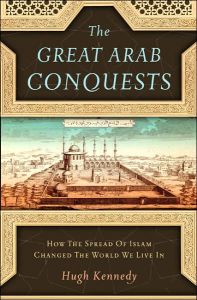Join getAbstract to access the summary!

Join getAbstract to access the summary!
Hugh Kennedy
The Great Arab Conquests
How the Spread of Islam Changed the World We Live In
Da Capo Press, 2007
What's inside?
Muhammad started a religion and a military force. How Arab conquests from the seventh century shaped the modern world.
Recommendation
This sweeping, engrossing narrative of Muslim conquests begins after the death of Muhammad in 632. The prophet’s death and the subsequent Islam-inspired military conquests had reverberations that echo today. Author and professor Hugh Kennedy has taught this topic for 30 years. His thoughtful presentation molds diverse renditions of these complicated events from various historical Arab and non-Arab sources (some fragmentary) into a driving story about the people and events that shaped Islam. With a critical eye and an engaging style, he includes details about the cultures, politics, battles, beliefs, personal lives, heroics and motives that drove the men whose armies ranged over some of the world’s most remote areas about 1,400 years ago. Reconstructing and deciphering these events is no easy task for any historian, yet Kennedy’s book has aspects of a great novel. getAbstract highly recommends it to anyone interested in Islamic history and beliefs, which continue to shape the Middle East.
Summary
About the Author
Hugh Kennedy has taught Medieval History at the University of St. Andrews since 1972. He was elected as a Fellow of the Royal Society of Edinburgh in 2000.
















Comment on this summary